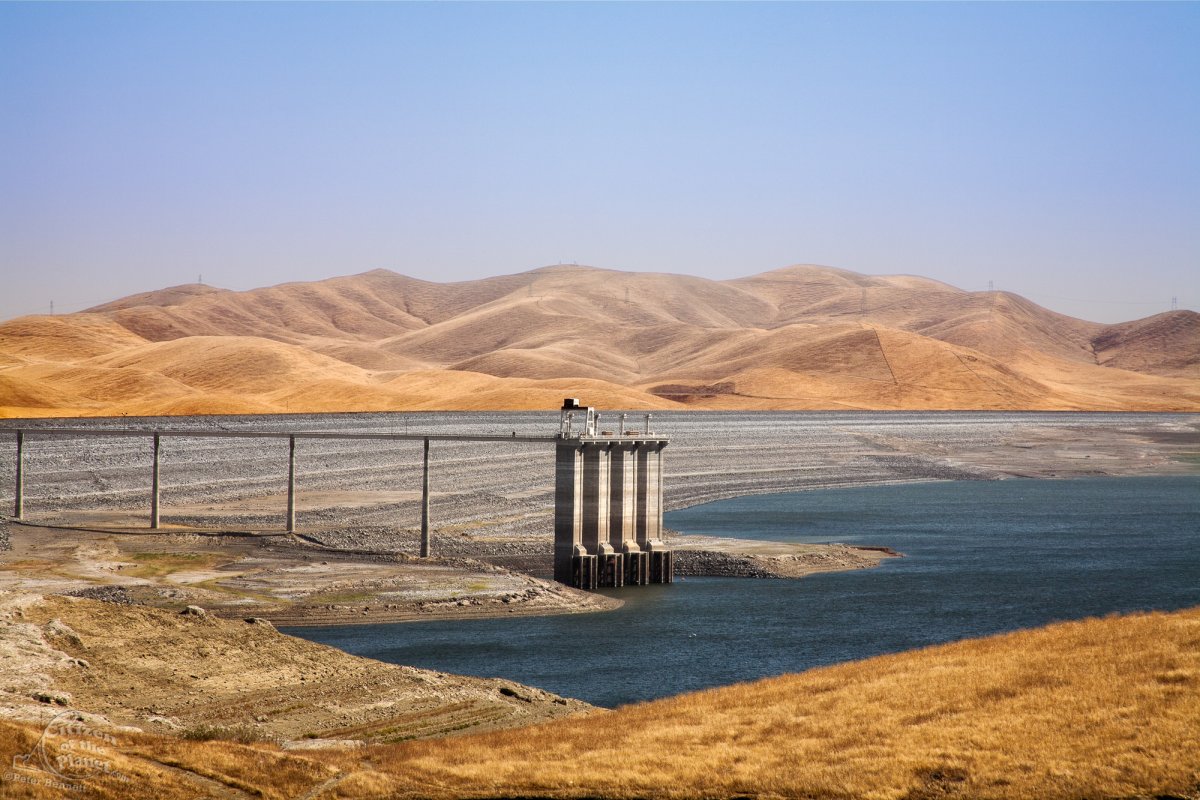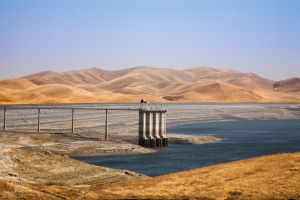Posted on 25 February 2021 By Bill Martin, member, Sierra Club California Water Committee and Sierra Club Bay Chapter Water Committee

The San Luis Dam and San Luis Reservoir is a water-storage “off-stream” reservoir and is typically low in late summer due to its heavy usage for irrigation, Merced County, California, USA Peter Bennett all rights reserved
On December 7, 2020, financial futures based on California water prices began trading. This post is a short introduction to these water futures.
First, what’s a future? A future is a type of contract. It obligates the seller, who receives money, to provide some good at some future date, to the buyer, who pays money now to lock in the right to buy that good at that price. Humans have been using futures for thousands of years, primarily for agricultural products. But in recent years the futures markets have been expanding.
A water future, in theory, would involve real water – a physical good, like the original agricultural futures. But the new futures trading today do not – they are purely financial. There is no actual, real water involved. The futures prices are based on water trading in five different real water markets in California: the statewide surface water market and five basins in Southern California where enough trading takes place for prices to stabilize.
The contracts are traded in the Chicago Mercantile Exchange (CME). The minimum contract is for 10 acre/feet of water. On 2/23/21, the price was $529 per a/f. So, someone with a futures account and about $5,000 could buy or sell a minimum contract.
But why would they, if there’s no physical water available? Well, first, not many people are. These contracts are not trading in much volume, indicating a lack of interest. But it is conceivable that an organization involved in California agriculture might use these futures to hedge their future costs. For example, an almond grower who irrigates with water from the Central Valley Project might buy futures contracts in February with September 30 expirations. If the water futures prices rise over the holding period, the grower could use the profit made on the futures to reduce the cost of buying irrigation water for their trees.
For now, this is an interesting thing to watch but it has little impact on the serious water issues facing California in 2021.
Links:
https://www.nasdaq.com/solutions/nasdaq-veles-water-index
https://www.bloomberg.com/opinion/articles/2020-12-08/why-water-won-t-make-it-as-a-major-commodity

